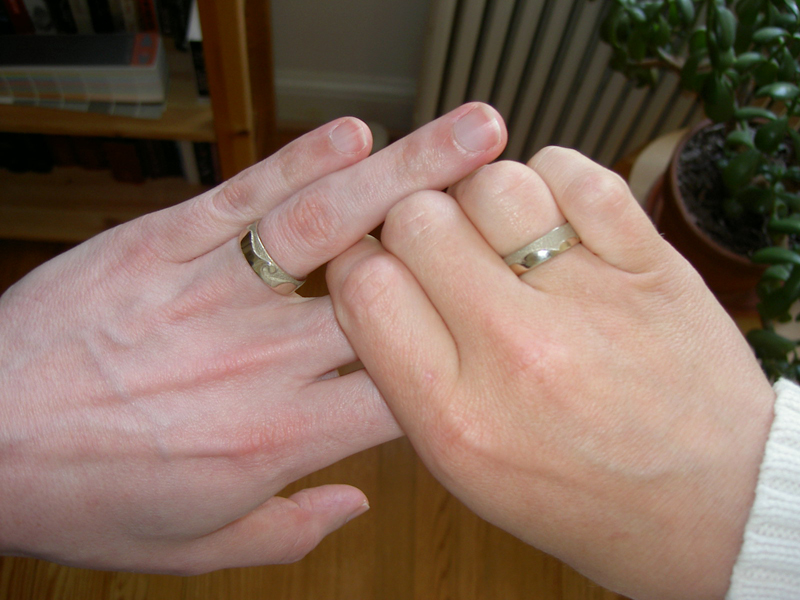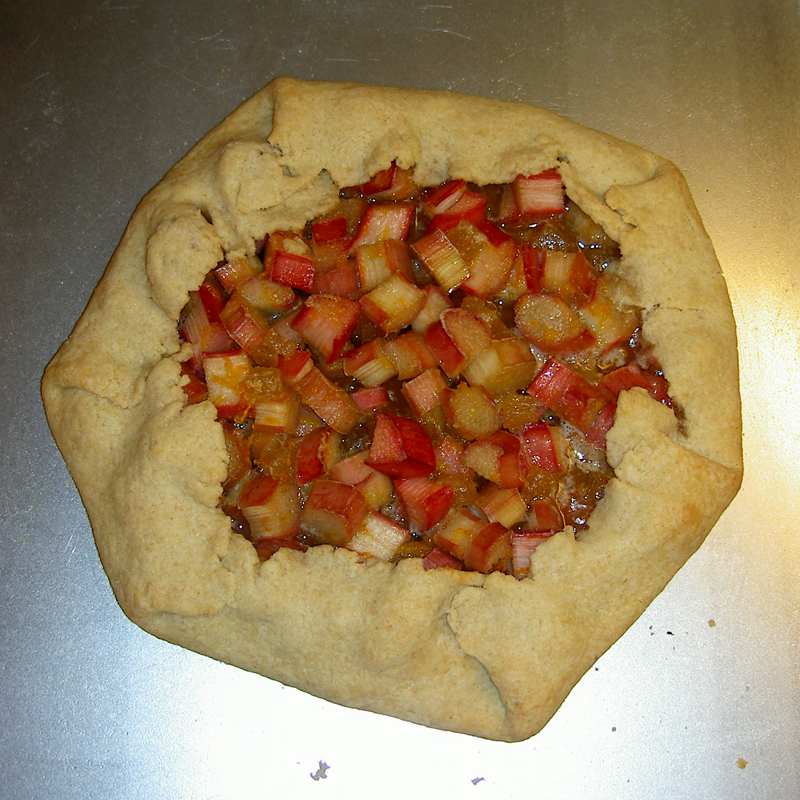This week I splurged and took the Zipcar to the shore to see the wintering waterfowl before they head back to my homeland for the summer (don’t get me started on the Flexcar buyout and how the new carlords are Teh Suck). This year I’ve decided to take the Go Where The Birds Are approach to seeing new species, at least in a low-effort general sort of way. I didn’t actually catch the rare White-winged Crossbill when it was hanging around locally, due to timing and lack of information, so a bird-chaser I most definitely am not.
That being said, I was eager to see the Tundra Swans on their winter grounds around the Chesapeake Bay, and I was not disappointed. As promised by the volunteer with whom I spoke on the phone, the swans were hanging about en masse on both sides of the bridge to the island. I had planned my trip to Eastern Neck Wildlife Refuge for Wednesday, figuring that the previous night of bad thunderstorms would have grounded other early migrators. Sure enough, I passed an entire field of resting Snow Geese just a few miles up the road inland. They were crowded around a farm pond, and I stopped to car to tromp over and get a closer look. Winds that day were over 20 mph, and I found myself laughing like a crazy person as I hoofed it through mud and over corncobs to look at some birds. I have no doubt the geese thought I was crazy as well, but they marked my first life bird of the day and I didn’t care. Just after the geese, I caught my first sight of a Bald Eagle, white tail splayed and yellow talons out, hovering over a field and dropping in for the kill. Those are some scary big birds! I had barely recovered from the shock of such a close-up view of the eagle when I spotted a Bobwhite, another bird I’d never seen before, nosing around in front of the hedgerow on the other side of the road. At this point I was being completely tailgated and passed, as it was the country and I was only going about 5 miles over the speed limit due to all the bird gawking, so I didn’t try to pull over and go back for a closer look.
Having sighted three new life birds before even getting to the refuge, and getting treated to all kinds of swans at the entrance, I wasn’t too unhappy to not see any other new birds on the trails. There were Buffleheads and Ring-necked Ducks out in the Bay, Canada Geese, Red-winged Blackbirds, Mallards and a Great Blue Heron along the river, and I’d seen Greater Black-backed Gulls and Ruddy Ducks at the marina where I’d ended up when I missed the last turn. I did have several nice second-sightings, though: a Horned Lark near the visitors’ center, a pair of Eastern Bluebirds on the wires along the main road, and another Bald Eagle hanging out on a utility pole across the water from the boardwalk. It was a good day for hunting; I saw loads of Turkey Vultures and two other hawks, a Red-tailed Hawk over one of the fields and a Cooper’s Hawk at the first house up the road on the mainland. The eagle was pointed out to me by an older guy who seemed to be making a sweep and looking for anything unusual. He also tipped me off to a few Greater Scaup hanging out in with the swans, and suggested that I head over to the Bombay Hook refuge if I wanted to see pintails and other wintering ducks.
Since I had the car for the day, I decided to make the drive over to the shore and see what I could see. After an uneventful drive, I was greeted at the edge of the refuge by another enormous flock of Snow Geese; I could see how they could be causing damage to the terrain. I was put in mind of the Sandhill Cranes at Jasper Pulaski, or the field of godwits we saw at the Wexford Slobs. Just before the gates I spotted a female American Kestrel on the telephone wires, another bird I’d only seen once before, and that from a car on the highway. The markings are quite distinctive, though, and the male had been easily identifiable even at a distance while moving. I took those sightings as a good omen and was not disappointed. After a decent number of Canada Geese, and the pleasant surprise of more Tundra Swans, the first ducks I saw were Northern Pintails. They are elegant birds, with their tufts and markings and pert tails. In the next more shallow area I was rewarded with Northern Shovelers, another duck that figured prominently on my to-see wish list. In with the shovelers were a good number of American Wigeon, which I’d seen in Oregon but only in the air, and many American Black Ducks, also something I’d only seen in flight on the Detroit River. I also spotted a pair of what I later determined must have been Pied-billed Grebes: stumpy little ducks with thick bills that are all-over a nondescript brownish-black color and are (apparently) year-round residents. Thank you, seasonal guide to birds seen at Bombay Hook, picked up for free at the visitors’ center! On the other side of the road from these dabblers were Green-winged Teal mixed in with many more American Black Ducks, all mucking around in the mud. I got a nice look at a male Teal at the last stop on my tour, also just poking around in shallow water, but much closer to the road.
At this final stop I was rewarded with a group of another common bird new to me: a group of maybe twenty Dunlins, flying and landing and poking the mud and flying some more. They were lovely, actually, with their white (non-breeding plumage) bellies and white-edged wings in flight. At this point I also had a completely awkward interaction with a human: there was another bird-watcher with a large scope attached to the side of his car who joined me in watching the Dunlins. I went over to ask him what he thought the birds were, figuring that with such high-tech equipment he would just know and I would be saved the effort of thumbing through the bird book and trying to tell all the shorebirds apart. When I approached, I realized that the scope was a lens attached to a digital camera, so I waited while he got some shots and then asked when the birds flew away from us what he thought they were. And he said, ‘Well, they’re not Sanderlings.’ And I thought, is this guy screwing with me? Because I may be only an advanced beginner at this, but, well: Sanderlings run in the waves at the edge of the ocean eating crustaceans. And we were, as I maybe forgot to mention, in a marsh. So I thought, two can play at this game, and I said, ‘well, they’re not White-rumped Sandpipers, because they don’t have a white rumps, although they’re about the same size and those sandpipers also visit freshwater mudflats.’ I admit that I can be mean, but it’s all relative; I thought I did well not to say, ‘and they’re not storks because those are much much taller.’ Anyway, he looked really uncomfortable, so rather than just stand there awkwardly, I said, ‘well, I have the book in the car, I’ll just try to figure it out’ and then he said, ‘yes, I’ll have to look them up, too.’ At which point I realized that maybe he didn’t actually know; maybe he was also a beginner and his approach was to photograph them and look them up at home. Or maybe he wasn’t even interested in the birds per se, but only the photographs. At any rate, I felt like a bit of a heel, and was really glad I hadn’t mentioned storks. Back in the car, with the help of Sibley—I’ve become a reluctant convert from Peterson after all these years—and the seasonal guide to birds seen at Bombay Hook, I correctly identified them as Dunlins and called it a day.
I plan to update my lifelist with these recent sightings this weekend.

